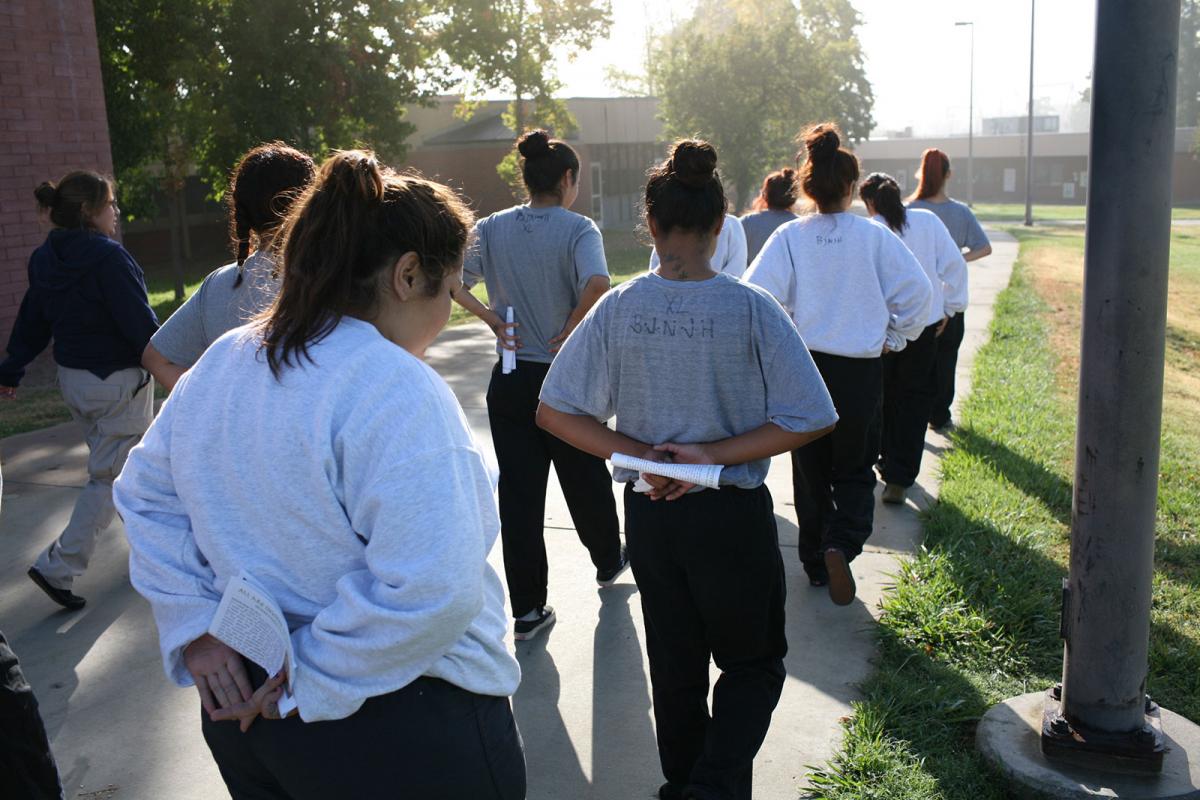
Girls from violent gangs walk to school inside a Juvenile detention center in Sylmar, California, USA.
You have the right to protection from violence and abuse, both physical and psychological. Children suffer the most in violent situations, whether it happens in their own homes or in a war. Some children are even forced to fight as soldiers, by armed groups.
For more insights and what the UN Convention on the Rights of the Child says about protecting children in violent settings such as war, armed conflict and gang violence, read below.
More than 400 million children live in countries affected by war or violent conflicts. Many of these children are forced to leave their homes to find safety, often living away from their homes for a long time. Some lose their parents or get separated from them because of these conflicts.
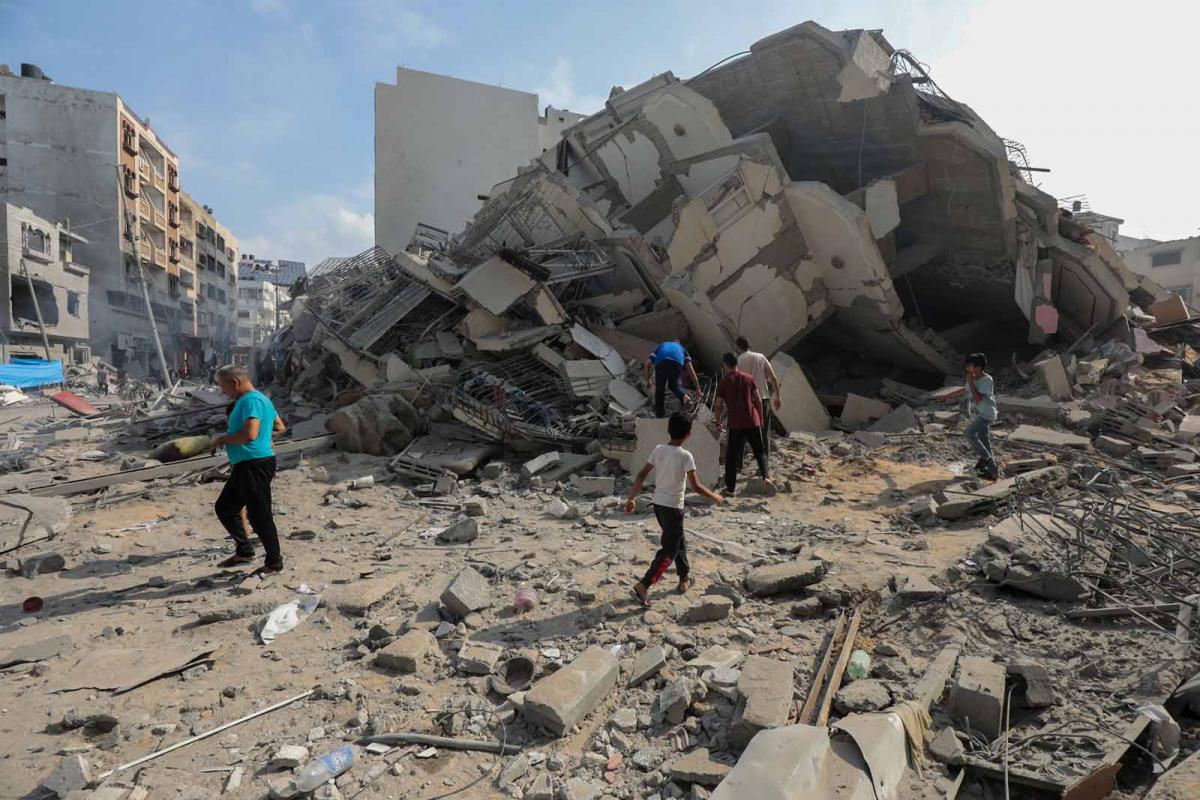
After airstrikes in the Gaza strip in October 2023, many buildings were destroyed. Photo: Naaman Omar
Children are at great risk in these situations. They can be harmed or even killed by airstrikes and other attacks. Many lose their homes and find themselves without a safe place to live. Without access to food, clean water, and healthcare, these children can become very sick. More than half of the people hurt or killed by landmines and leftovers from wars are children. Since 2010, the number of confirmed attacks on children has increased threefold.

This boy in Colombia was shot after being recruited by a rebel group and forced to fight.
One of the most dangerous tasks that children are forced to perform is fighting as soldiers in wars. Children forced to become soldiers may have to harm, and sometimes even kill people. They can also be injured or killed themselves.
No child should experience violence. The UN Convention's Article 38 bans using children in warfare. Initially the age was set at 15 in 1989. An amendment in the year 2000 raised the age limit to 18, emphasizing the protection of minors from military exploitation.
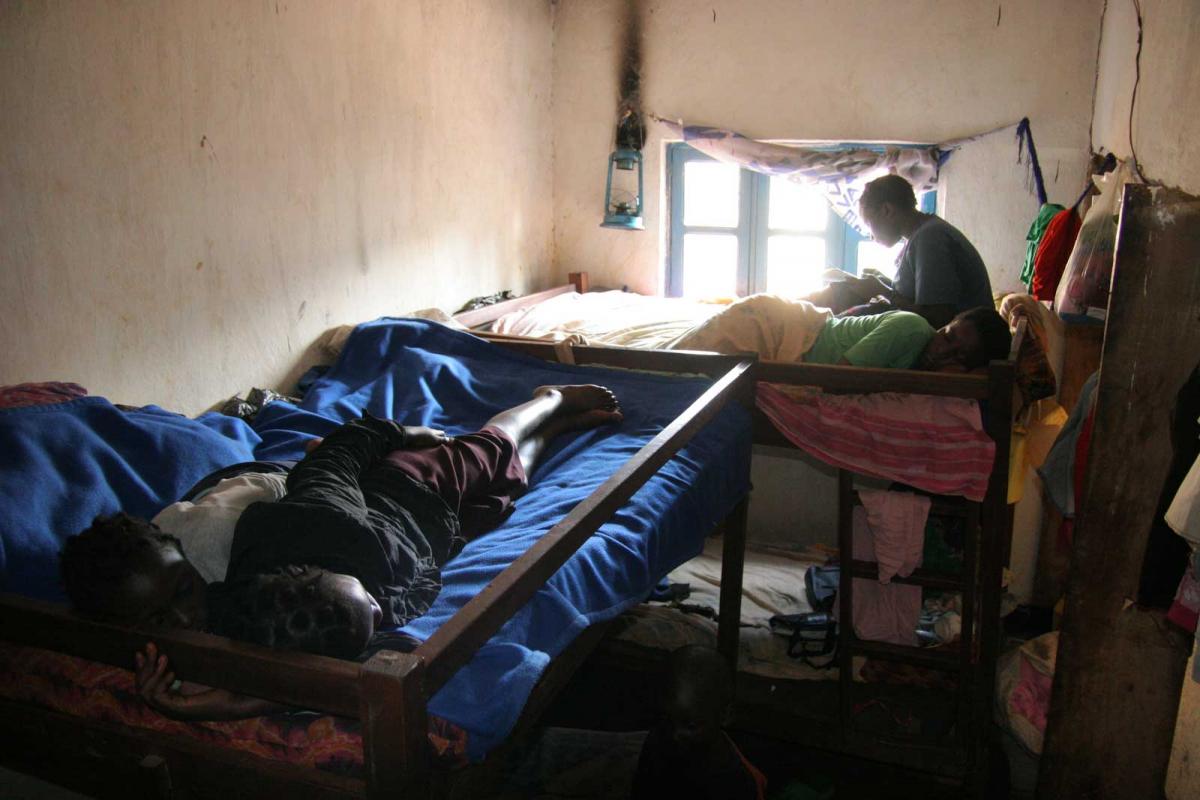
Girls who have been rescued from captivity with armed groups relax and heal at a safe house in DR Congo.
Many children who become soldiers are kidnapped by armed groups. These abductions are both a recruitment strategy and a means to frighten and terrorize families and communities.
From 2005 to 2020, over 93,000 children were forced to fight as soldiers in armed conflict. Some were also used as carriers, or mine clearers. Some children exploited by armed groups, especially girls, also face sexual abuse. Some girls are forced into marriage with adult soldiers. Reports suggest at least 14,200 children suffered such abuse during this period, but the actual figures could be higher. Sexual violence is rarely reported because the victims and even their families are often shamed by their communities.
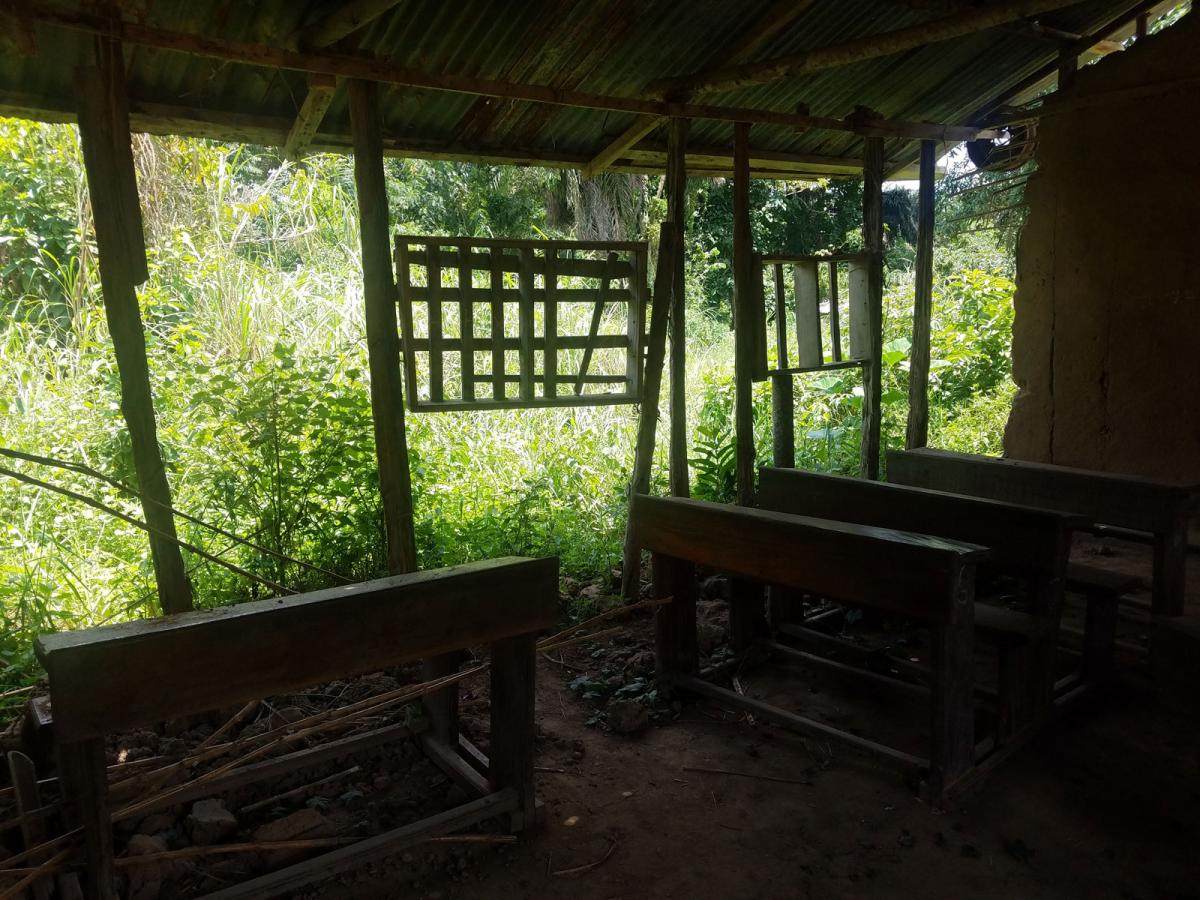
A school in a DR Congo village almost completely destroyed by a violent attack by an armed group.
Children who are forced to fight by adults face multiple rights violations, not only abuse and death. They lose their families, their education, and access to proper healthcare. Their traumatic experiences often lead to serious long-term physical and mental health issues. It can be hard for many children who have been forced to fight as soldiers to return to a normal life. Lack of education can also make it difficult for them to find jobs in the future, increasing the risk of getting involved in criminal activities or substance abuse.

Children playing in a village in Myanmar (Burma) near the border of Thailand are always at risk of airstrikes and attacks from their countries military government.
Article 31 highlights every child's right to play and have fun, rest, and have free time. For childen growing up in war and conflict, these fundamental rights are usually lost. They miss the chance to play, learn, and enjoy a carefree childhood.

Children heal from traumatic experiences while being used as soldiers or by gangs through taking care cf horses at a children's center in Colombia.
No one is allowed to harm you, hit you or force you to do anything that makes you feel uncomfortable or afraid. The pressures of growing up in war, and/or being forced to take part in violent actions can cause life-long mental health problems.
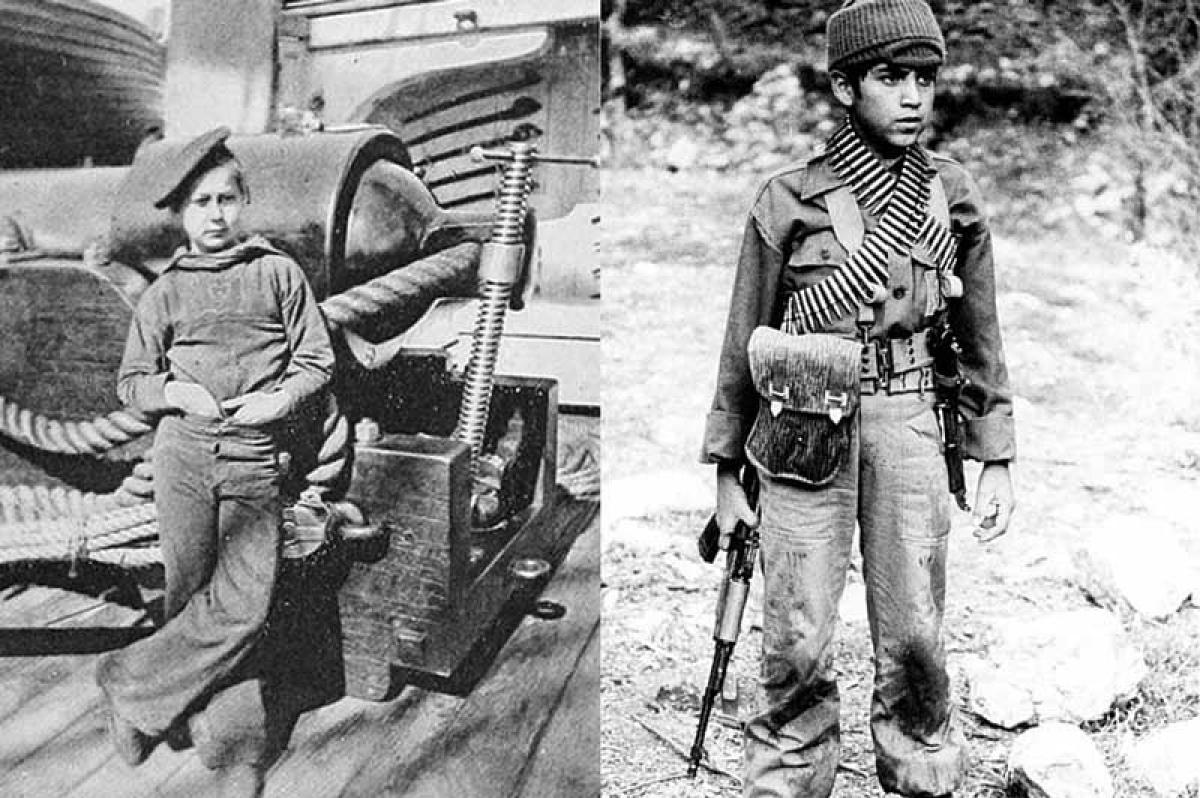
Children used as soldiers from two different wars: On the left, a boy on a US war ship in 1911, on right a boy fighting in the Iraq-Iran war in circa 1980s.
Throughout history, children have been used in military conflicts worldwide. As late as in the 20th century, children fought in both World Wars, in Northern Ireland, the Balkans, and in recent conflicts in, for example, Iraq, Myanmar, Central Africa, Syria and Colombia.
In addition, children in many urban areas globally are recruited by criminal cartels and gangs, They exploit children for dangerous tasks like handling weapons and trafficking drugs, and the children face challenges that are in some ways similar to tose of children being uses by armed groups in war and armed conflict.
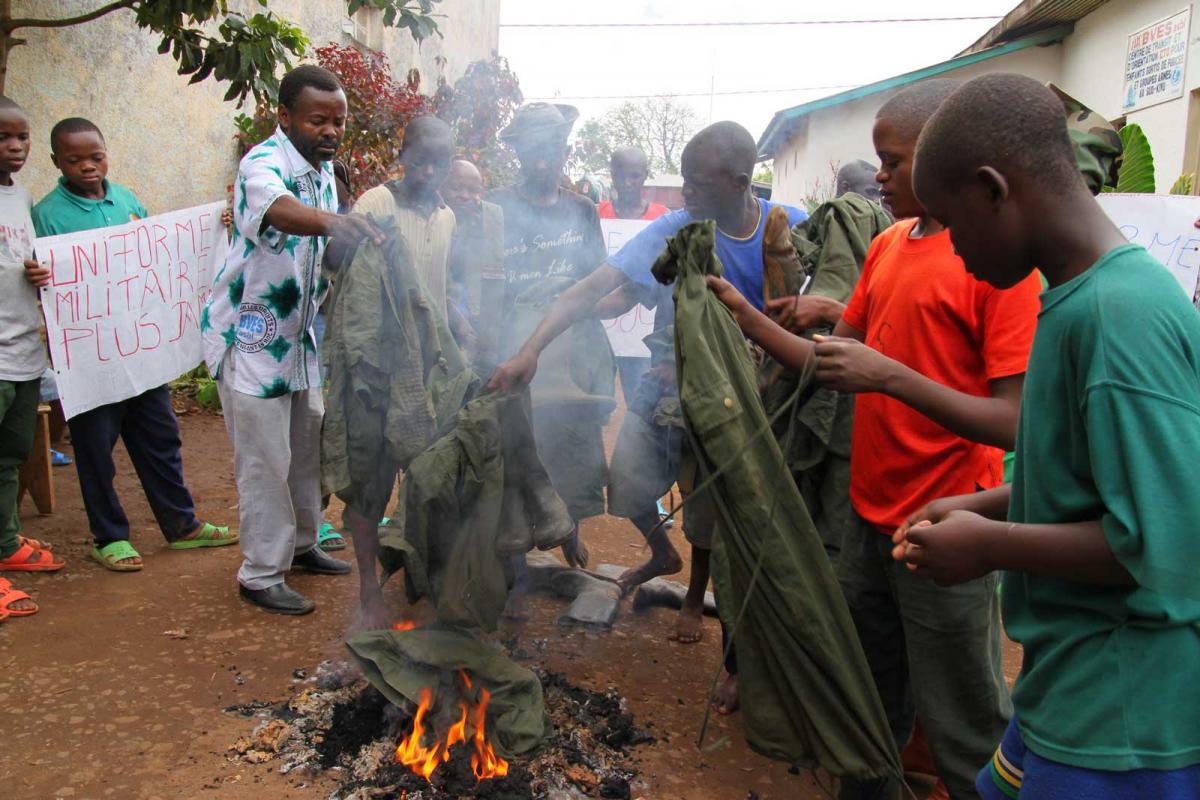
Former child soldiers on D.R. Congo burn their military uniforms before returning to school.